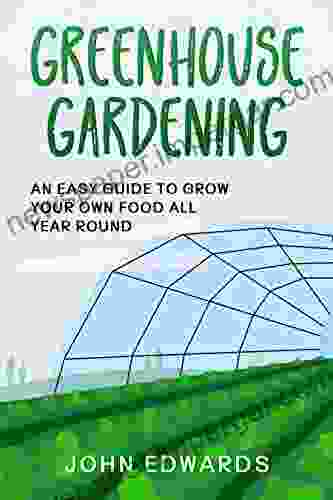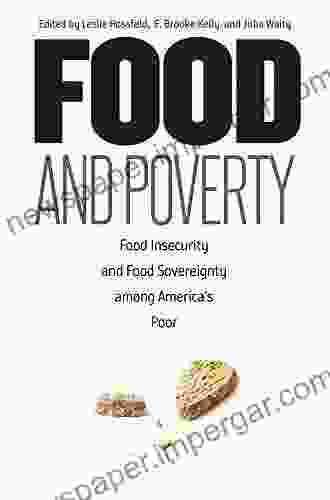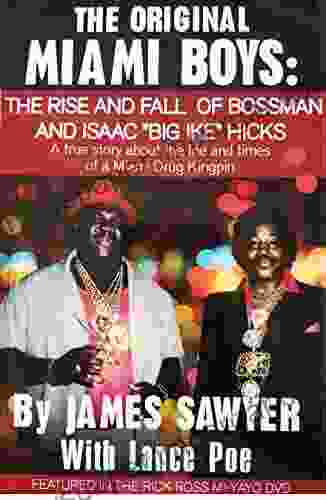An Easy Guide to Grow Your Own Food All Year Round

Growing your own food is a great way to save money, eat healthier, and reduce your environmental impact. But it can be daunting to know where to start, especially if you don't have a lot of experience with gardening.
This guide will show you how to grow your own food all year round, regardless of your climate or experience level. We'll cover everything from choosing the right plants to planting, watering, and harvesting your crops.
5 out of 5
| Language | : | English |
| File size | : | 1646 KB |
| Text-to-Speech | : | Enabled |
| Screen Reader | : | Supported |
| Enhanced typesetting | : | Enabled |
| Print length | : | 164 pages |
| Lending | : | Enabled |
Chapter 1: Getting Started
The first step to growing your own food is to choose the right plants. Consider your climate, the amount of sunlight your garden receives, and the amount of time you have to care for your plants.
Once you've chosen your plants, it's time to prepare your garden. This involves clearing the area of weeds and debris, and adding compost or other organic matter to improve the soil.
Now you're ready to plant your seeds or seedlings. Be sure to follow the directions on the seed packet or plant tag. Once your plants are in the ground, water them well and mulch around them to help retain moisture and suppress weeds.
Chapter 2: Growing in Different Climates
The climate you live in will determine what plants you can grow and when. In cold climates, you'll need to choose plants that are hardy enough to withstand the winter. In hot climates, you'll need to choose plants that can tolerate the heat and drought.
If you're not sure what plants to grow in your climate, check with your local extension office or nursery. They can help you choose the right plants and provide you with advice on how to care for them.
Chapter 3: Watering and Fertilizing
Watering is essential for keeping your plants healthy and productive. The amount of water you need to give your plants will vary depending on the weather, the type of plants you're growing, and the soil conditions.
Fertilizing your plants will help them grow strong and produce more food. There are many different types of fertilizers available, so be sure to choose one that is appropriate for the plants you're growing.
Chapter 4: Harvesting and Storing
Harvesting your crops is the culmination of all your hard work. When harvesting, be sure to use sharp tools to avoid damaging the plants. Handle your produce carefully to avoid bruising or crushing it.
Once you've harvested your crops, you need to store them properly to prevent them from spoiling. The best way to store produce is in a cool, dark, and humid place. You can also can, freeze, or dry your produce to extend its shelf life.
Growing your own food is a rewarding experience that can save you money, improve your health, and reduce your environmental impact. This guide has provided you with the basic information you need to get started. For more detailed information, be sure to consult other resources, such as books, websites, and gardening clubs.
**Image alt attributes:**
* **Image 1:** A person planting seeds in a garden * **Image 2:** A variety of fresh fruits and vegetables * **Image 3:** A person harvesting tomatoes from a garden * **Image 4:** A family enjoying a meal of homegrown food
5 out of 5
| Language | : | English |
| File size | : | 1646 KB |
| Text-to-Speech | : | Enabled |
| Screen Reader | : | Supported |
| Enhanced typesetting | : | Enabled |
| Print length | : | 164 pages |
| Lending | : | Enabled |
Do you want to contribute by writing guest posts on this blog?
Please contact us and send us a resume of previous articles that you have written.
 Book
Book Novel
Novel Page
Page Chapter
Chapter Text
Text Story
Story Genre
Genre Reader
Reader Library
Library Paperback
Paperback E-book
E-book Magazine
Magazine Newspaper
Newspaper Paragraph
Paragraph Sentence
Sentence Bookmark
Bookmark Shelf
Shelf Glossary
Glossary Bibliography
Bibliography Foreword
Foreword Preface
Preface Synopsis
Synopsis Annotation
Annotation Footnote
Footnote Manuscript
Manuscript Scroll
Scroll Codex
Codex Tome
Tome Bestseller
Bestseller Classics
Classics Library card
Library card Narrative
Narrative Biography
Biography Autobiography
Autobiography Memoir
Memoir Reference
Reference Encyclopedia
Encyclopedia John P Cann
John P Cann Kindle Edition
Kindle Edition John E Campbell
John E Campbell John Dewey
John Dewey Josef Niebauer
Josef Niebauer Jools Sinclair
Jools Sinclair Joseph Lofthouse
Joseph Lofthouse John Warner
John Warner Jomo London
Jomo London John Doty
John Doty John T Moore
John T Moore John Milward
John Milward Joseph Kessel
Joseph Kessel John R Vile
John R Vile Joseph Douglas
Joseph Douglas John Duncanson
John Duncanson John Kador
John Kador Joseph B Entin
Joseph B Entin Jonathan Rogers
Jonathan Rogers Joseph Moldover
Joseph Moldover
Light bulbAdvertise smarter! Our strategic ad space ensures maximum exposure. Reserve your spot today!
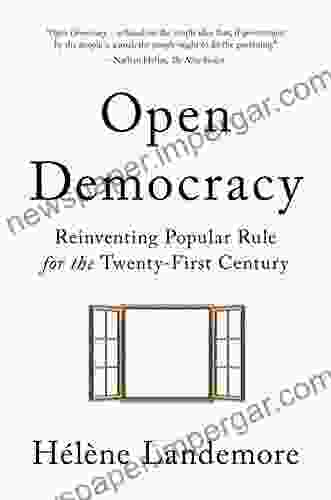
 Herb SimmonsReinventing Popular Rule for the Twenty-First Century: A Comprehensive Guide...
Herb SimmonsReinventing Popular Rule for the Twenty-First Century: A Comprehensive Guide...
 Dave SimmonsExplore the Captivating History of Moldova and Eastern Europe: An In-Depth...
Dave SimmonsExplore the Captivating History of Moldova and Eastern Europe: An In-Depth... Allen ParkerFollow ·9.7k
Allen ParkerFollow ·9.7k William PowellFollow ·4.7k
William PowellFollow ·4.7k Edmund HayesFollow ·16.4k
Edmund HayesFollow ·16.4k Kenneth ParkerFollow ·11.7k
Kenneth ParkerFollow ·11.7k Ike BellFollow ·19.5k
Ike BellFollow ·19.5k Billy FosterFollow ·13.4k
Billy FosterFollow ·13.4k Richard SimmonsFollow ·3.4k
Richard SimmonsFollow ·3.4k Dan BellFollow ·3.7k
Dan BellFollow ·3.7k
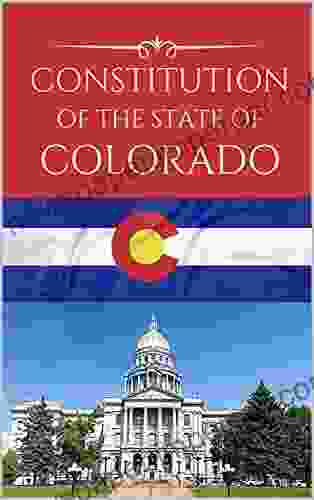
 Jake Powell
Jake PowellThe Constitution of the State of Colorado: A Legacy of...
Since its adoption in 1876, the...
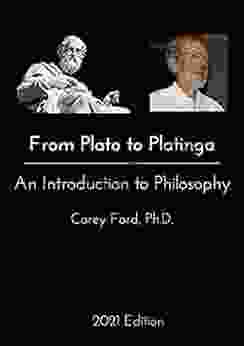
 Devin Ross
Devin RossFrom Plato to Plantinga: A Journey Through the History of...
Philosophy is the study of...
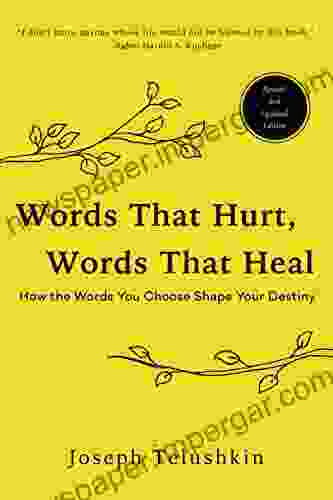
 Robin Powell
Robin PowellWords That Hurt, Words That Heal: The Power of Language...
Words are powerful. They can...
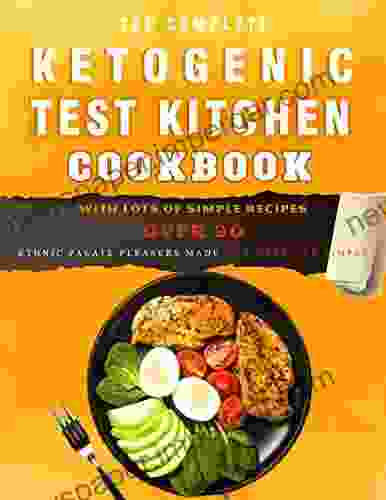
 T.S. Eliot
T.S. EliotTantalize Your Taste Buds with Over 90 Low-Carb Ethnic...
Indulge in a Culinary Adventure with "Over...
5 out of 5
| Language | : | English |
| File size | : | 1646 KB |
| Text-to-Speech | : | Enabled |
| Screen Reader | : | Supported |
| Enhanced typesetting | : | Enabled |
| Print length | : | 164 pages |
| Lending | : | Enabled |


